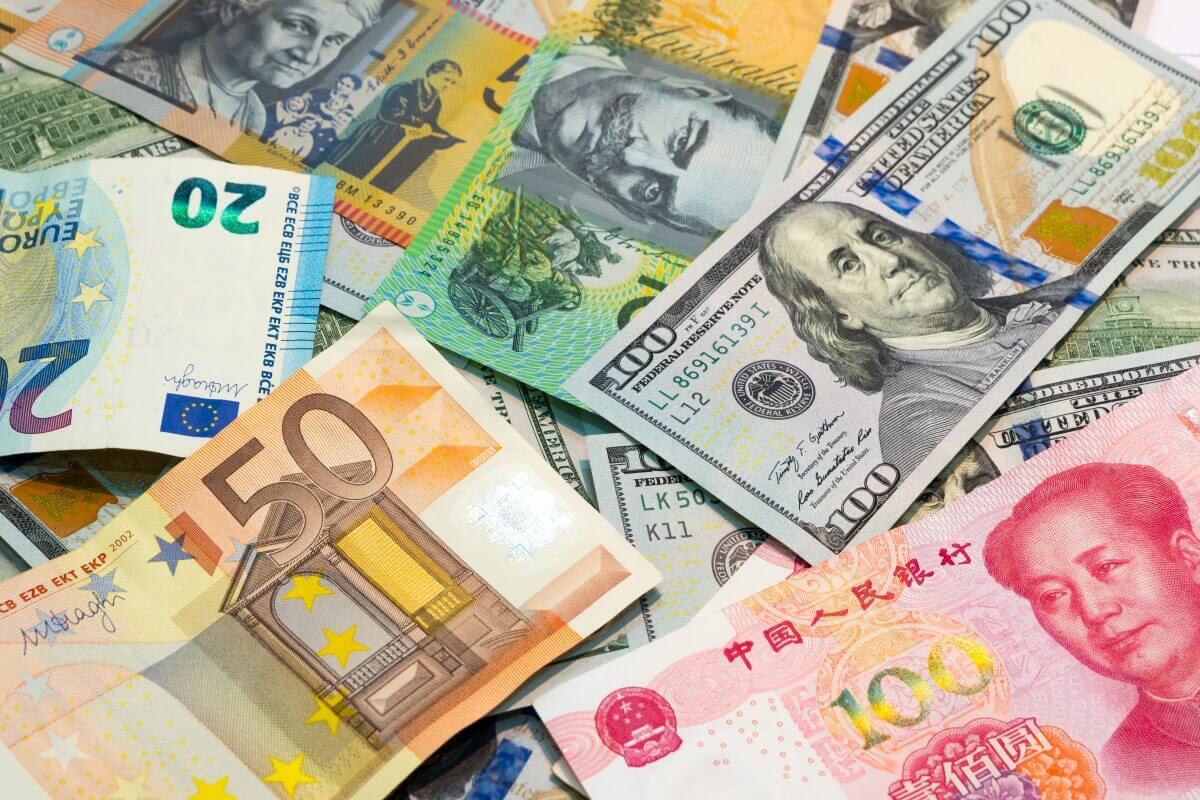The euro plummeted on Thursday after the European Central Bank reiterated its plans to unwind stimulus slowly. It kept its policy stance broadly unchanged at its meeting. The common currency turned negative, dropping by 0.1% to $1.08820 after the ECB confirmed its plans to cut bond purchases this quarter. The latter are commonly known as quantitative easing. The bank plans to end them at some point in the third quarter. The ECB also noted that interest rates would only go up for some time after the end of bond buys, and they will be gradual.
The Forex market will not have a preference for the euro over the greenback until there is more clarity about whether the bank will raise the key rate in the fourth quarter – stated Antje Praefcke, FX analyst at Commerzbank. She thinks the market will also want to wait and see how the Ukraine conflict and the energy sanctions develop.
On Thursday, the dollar index climbed up 0.06% at 99.854 against the basket of six currencies. It slowly moved closer to its highest point since May 2020 at 100.520 hit on Wednesday. A surge in Treasury yields supported the greenback this week. However, the benchmark 10-year Treasury yield rally paused recently after jumping to a December 2018 high. The reason was U.S. inflation data this week, which, while high, was not as bad as investors had feared.
Meanwhile, the struggling Japanese yen had some respite. It made a small recovery from a 20-year low hit versus the U.S. dollar. More than three-quarters of Japanese companies say the yen has decreased to the point of being detrimental to their business.
The Swedish crown skyrocketed. Why’s that?
The Swedish crown rallied to an eight-day high against the greenback on Thursday. Sweden’s inflation data came in stronger than traders expected. It bolstered investors’ expectations for a Riksbank rate hike occurring sooner rather than later. In February, the bank had indicated it planned to keep rates at 0% until 2024. Many analysts now say that it’s unrealistic. Other central banks have already tightened monetary policy, reinforcing the market’s expectations of higher interest rates globally.
The Bank of Korea surprised traders with a rate hike. The Monetary Authority of Singapore tightened its policy, as well, causing the Singapore dollar’s surge to its highest level since February. The Reserve Bank of New Zealand and Bank of Canada both raised rates by 50 basis points on Wednesday. That is the largest hike for each bank in around 20 years.
In Asia, the Turkish lira remained steady on Thursday. The central bank’s decision to hold its policy rate at 14% hasn’t had much effect on the currency. However, Russia’s rouble tumbled down ahead of the planned easing in capital controls next week.
After the widely expected central bank move, the lira declined by 0.2% to 14.61 USD. The latter came even as annual inflation was estimated to jump beyond the current 61%. The bank announced that the rising energy costs and supply shocks had driven an increase in price pressures. However, inflation should start to ease soon.
The decision in Turkey followed a series of interest-rate raises in EM markets overnight. Korea, Argentina, and Singapore all tightened monetary policy to hinder inflation. The ongoing Russia-Ukraine war only fueled the latter.
What do the analysts forecast for the lira?
Jakob Christensen, the chief analyst and head of EM research at Danske Bank, noted that for now, the depositors in Turkey are buying into the story that the new scheme will keep its currency value of deposits.
However, inflation is running significantly above target with the Federal Reserve tightening. It’s putting pressure on the refinancing of Turkey dollar loans and soaring oil prices. So, Christensen isn’t confident that the stability traders have seen in the Turkish lira for the past months can be maintained.
Turkey’s unorthodox policy under President Tayyip Erdogan caused a currency crisis last year. It ended with the lira shaving off 44% of its value and winning the title of the worst-performing currency of 2021. That further spurred inflation, but the central bank took some measures to stabilize the currency over the past few months.
On Thursday, Russia’s rouble dropped to approximately 80 a dollar in Moscow. The central bank declared that it would lift a temporary ban on selling foreign exchange cash to individuals from April 18.











